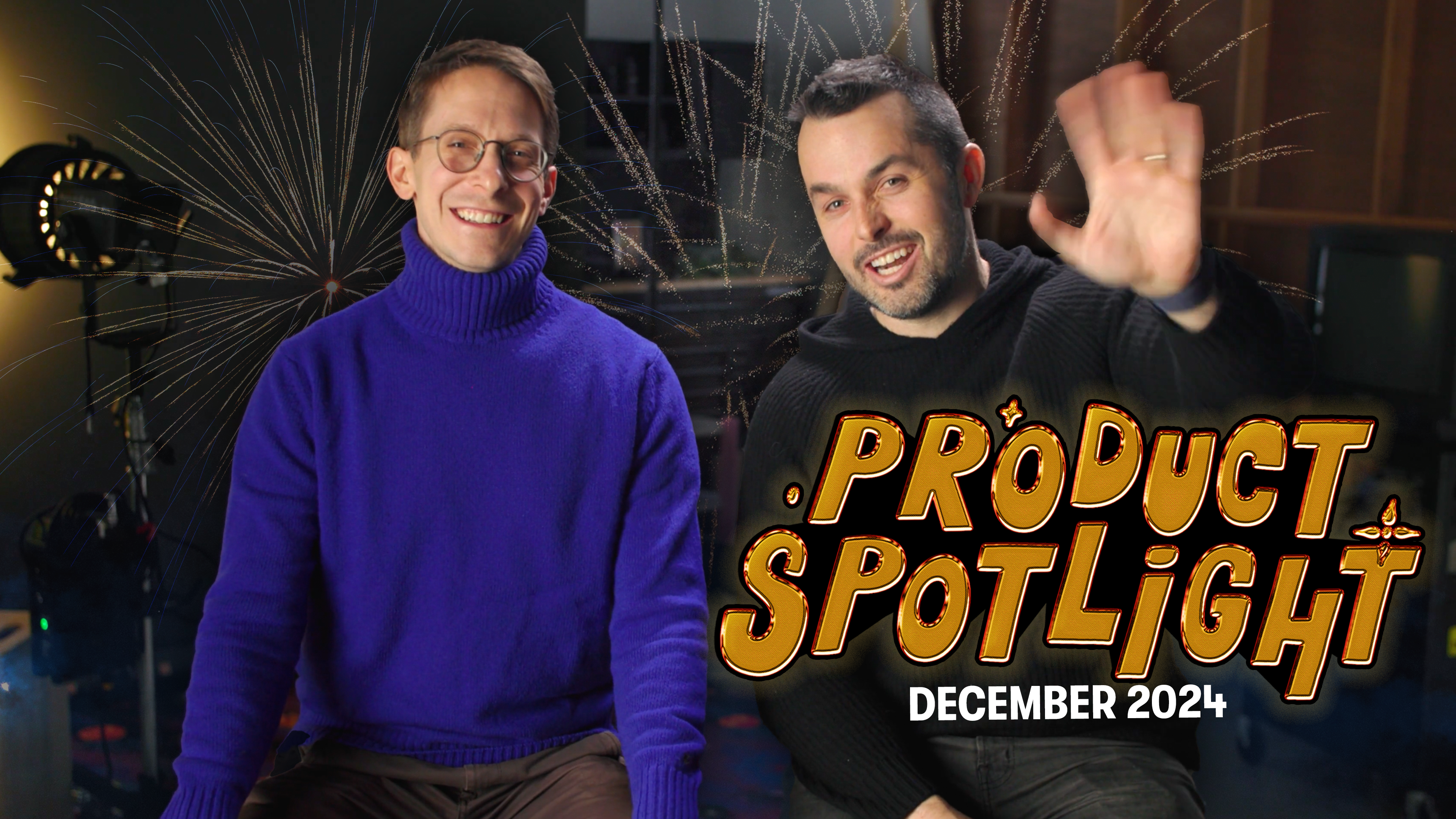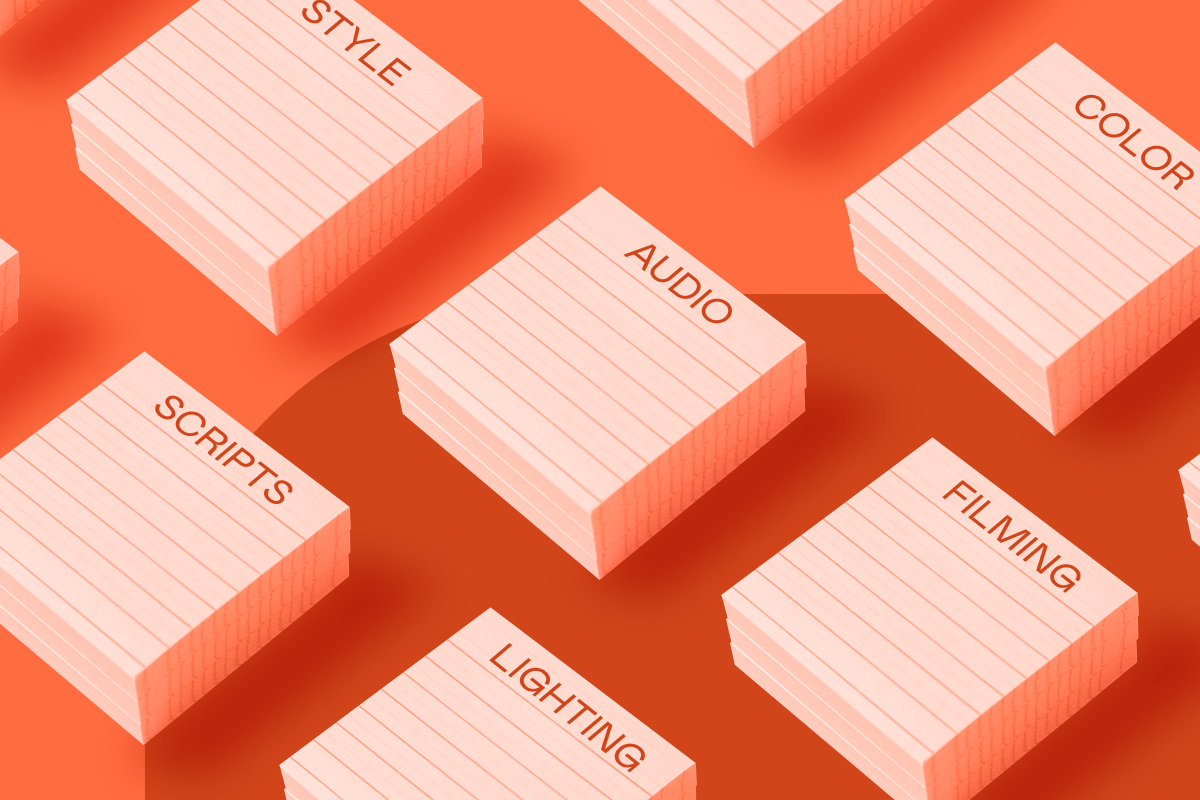Interviewing Remote Podcast Guests: 10 Tips from Wistia Studios
December 15, 2020
Topic tags
Chris Lavigne
Creative
Adam Day
Creative
Hey there, it’s Chris and Adam from Wistia! We’re on the Wistia Studios team, where we focus on creating innovative video series and podcasts for people like you to enjoy.
We’ve done everything from fixing up an old station wagon while interviewing marketing leaders to spending $1111,000 on three different ads to test the impact production quality has on advertising. Needless to say, we’re not afraid to try crazy ideas, test new theories, and iterate the process to produce a memorable end result.
For this post, we wanted to break down a few tips that we’ve learned from interviewing podcasts guests remotely. This is our tried and true process for creating crisp audio and making guests feel at home — enjoy, and let us know if you have any other tips below!
Before the interview
Planning makes perfect, and this adage certainly rings true for podcasting. The first thing to consider is pre-production. This is the planning stage for your project. And remote interview or not, all of the standard interview rules apply here.
1. Conduct a pre-interview
Every good interview starts with a good pre-interview! Schedule a 15–20 minute call with your guest to get the ball rolling. Explain a bit about your show and your audience. Let your guest know what topics you’re hoping to cover. And when you’re doing this, think about what you want to know from this guest. Why are you having them on your show? Why do you want your audience to hear what they have to say?
One thing we love to do on pre-interviews is ask a few high-level questions to see which areas our guests get particularly fired up about. Then, we’ll make notes and craft questions for the actual interview knowing what they’re really excited to talk about. Those notes will serve as a guide for the interviewer.
And, the pre-interview call is a great time to set some expectations for the actual interview. Let your guest know what to expect on the day of your recording — and let them know what will help them sound their best. Ask your guest to make sure they have headphones and see if they have a dedicated microphone for the call on the day of the interview.
You can also let them know how you’re planning to record the conversation. Which is a great segue to our next tip — how are they going to record the conversation?
2. Pick your recording software
Alright. It’s time to talk tech. How are you going to record this thing? There are many different ways to produce remote interviews, but it all starts by choosing a platform to host your call.
When we’re capturing a remote interview here at Wistia, we use Zoom, and it’s proven itself to be a super-powerful, super-reliable tool. What’s great is that the Zoom Free plan lets you have unlimited one-on-one conversations — like an interview!
One thing to note is that if you’re on a free plan, the call length is limited for group calls, so you’ll need to keep an eye on the clock if you want to have multiple hosts, multiple guests, or if you want to have a producer on the call with you. So, if you’re going to have a pretty long and in-depth interview, you’ll need to pony up for a paid Zoom plan or look for another internet calling solution.
One reason in particular that we’re fans of Zoom is for their multi-track audio recording. By enabling a simple setting in your audio preferences, Zoom will record individual tracks for your meeting participants. This is very handy when you head into post-production!
3. Make sure everyone has a great microphone
But just clicking record on your Zoom meeting will leave you with a low to medium quality sound recording. And you’re better than low to medium quality, right?! Of course, you are! So, if you want to really up your game, you can produce your interview to sound like you’re in the exact same studio, sitting right across from your guest.
The way to get the best sound quality is for you and your guest to have a dedicated microphone and record your own side of the conversation.
Now, we know what you’re thinking. “This is perfect! I can use my Beats by Dre Bluetooth headphones with Zoom all the time. No cords!” — But don’t even think about using Bluetooth headphones.
The microphone sound quality on Bose, Beats by Dre, or even Apple AirPods will not be good enough. Find some good old fashioned wired headphones with the little microphone built-in or, better yet, get a dedicated USB microphone. There are a bunch of amazing sounding mics for very little money these days.
You have the Samson Q2U, the Audio Technica ATR2100X, the Blue Yeti or Blue Yeti Nano, and the Neewer 800 is very reasonably priced!
4. Record the conversations locally
To capture high-quality sound that makes it seem like you and your guest are in the same room, you’ll each need to record your side of the conversation locally on your own computer. If you’re on a Mac, you can use free software like QuickTime or Garageband, and if you’re on a PC, you can use something like Audacity.
And if that seems like a bit too much to ask of your guest, consider checking Zencastr, which is a web app that can record higher-quality audio for remote conversations.
Another must: Wearing headphones is a non-negotiable for you and your guest. We can’t stress this enough! So again, make sure you mention to your guest that they’ll need wired headphones during the interview.
During the interview
First things first, don’t show up late to your own show. Be ready. Get on the call early, so you’re right there with a smiling face and a cup of English Breakfast when your guest joins the call. Before you dive in, double-check your microphone and sound settings. Run through your interview notes. And remember the words of Scar from Disney’s 1994 animated classic, The Lion King… Be prepared!
5. Use your webcam
We always have our webcams turned on when we record audio remotely at Wistia. And when you conduct your remote interview, you should, too. Being able to see your guest will help you make a more personal connection, which will make for a more natural conversation.
Now because this is just audio, you’ll have a ton of flexibility when editing your interview. Don’t be afraid to circle back to do the intro over again or re-take specific parts of the conversation. And, simply take a break if the audio isn’t sounding great.
The great thing is, you’ve already done a ton of work. You’ve had a pre-interview, you have a plan for your conversation. And all the technical stuff is out of the way. Now you can focus on having a great conversation.
6. Rope in a producer
If your podcast has a producer, it can help to have them on the call so they can listen in. They can send chats to you to help guide the conversation and keep you on track. They can also be another set of ears to ensure the content you’re capturing will work well for your show.
7. Avoid affirmations
It goes against everything your parents and teachers taught you, but good practice for a remote interview is to avoid affirming your guests. All those “mmmm hmmms” and “uh huhs” are going to be distracting for your listener, and you’re going to end up editing those affirmations out anyway. So, just smile and nod.
8. Don’t be afraid to follow the conversation
Finally, use your interview questions as a guide, but stay focused and listen to your guest. Chase the energy of the conversation — even if you have to deviate from your notes. And ask follow up questions and go after topics, even if they’re unexpected. This will help you capture an engaging conversation, rather than just a question and answer session.
After the interview
Alright! The interview’s done. Hooray! Now it’s time to organize your files.
9. Get your guest’s recording
If you and your guest recorded your own tracks locally, make sure to ask your guest to send you their files right away. Don’t sleep on this! The last thing you want is to have to send endless emails hoping you’ll one day get their side of the conversation.
Set up a Dropbox folder, or ask your guest to send their files using WeTransfer, so you have everything you need to edit your interview. Just try to make it as easy and painless as possible for your guest.
10. Thank your guests
After you received your files, make sure to do a spot-check on them to ensure they sound good. From there, make sure to thank your guest! They took the time to be a guest on your show — the least you can do is send a follow-up email, right? And hey, get creative with it! You can even put together a little goodie bag of swag to send off as a thank you for taking the time to come on your podcast.






